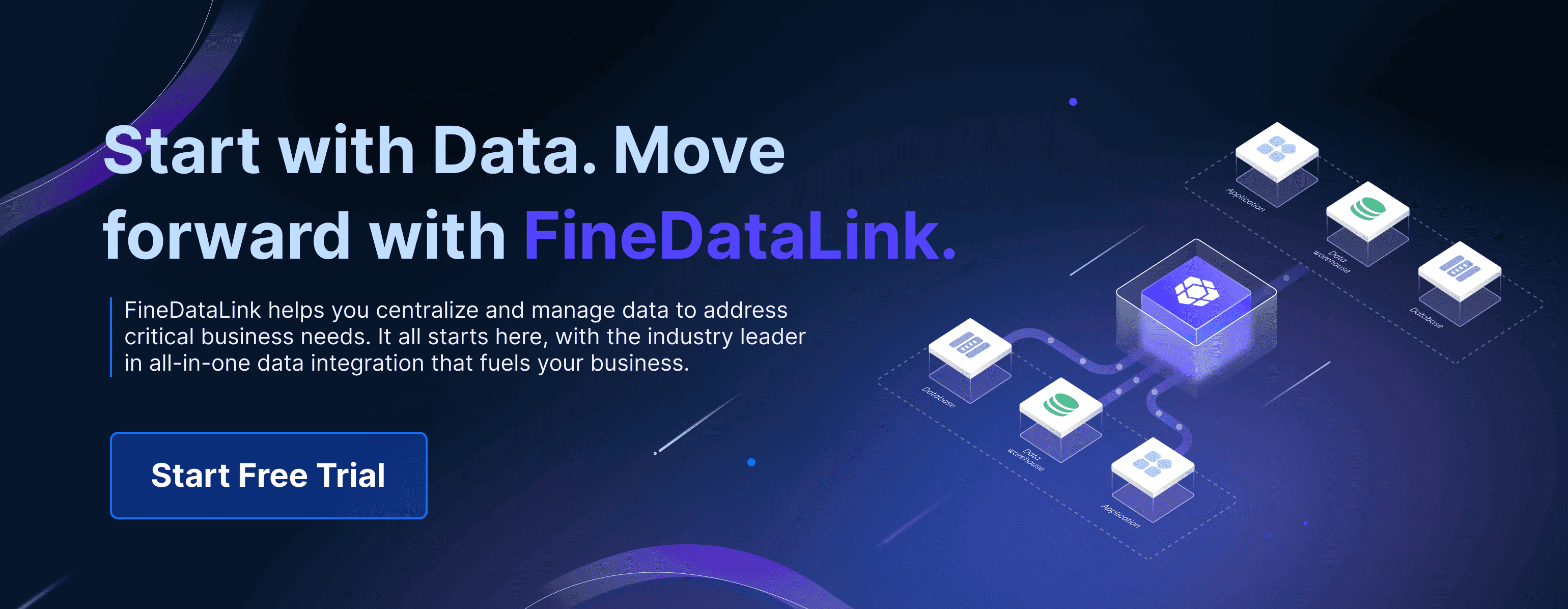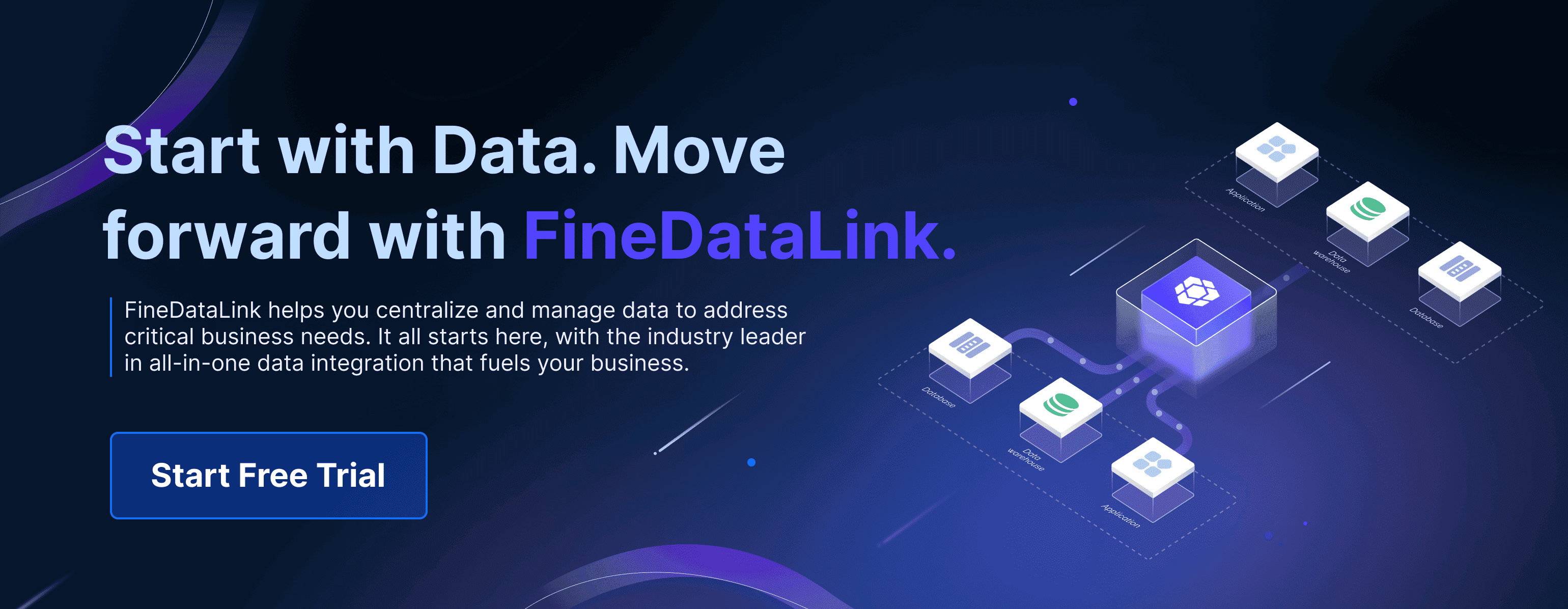

In today's data-driven world, data monitoring plays a crucial role in ensuring business success. You need to systematically collect, analyze, and manage data to maintain its quality and security. This process becomes essential as data influences every decision and innovation. Companies that adopt data-driven decision-making are 5-6% more productive and profitable than their competitors. By mastering data monitoring, you can enhance decision-making, leading to better outcomes. Tools like FineDataLink, FineReport, and FineBI empower businesses to harness data effectively, ensuring you stay ahead in the competitive landscape.
Understanding Data Monitoring
Definition and Importance of Data Monitoring
What is Data Monitoring?
Data monitoring involves the systematic process of collecting, analyzing, and managing data. This practice ensures that data remains accurate, secure, and compliant with relevant standards. By continuously observing data, you can detect anomalies, track performance, and maintain data quality. This process is essential for businesses aiming to leverage data effectively.
Why is it Crucial for Businesses?
Data monitoring plays a pivotal role in business operations. It helps maintain data quality, which is vital for making informed decisions. Accurate data leads to better decision-making, enhancing overall business performance. Companies that prioritize data monitoring often gain a competitive edge. They can quickly identify trends, address issues, and adapt to market changes. As a result, they experience growth and success.
Key Components of Data Monitoring
Data Collection
Data collection forms the foundation of data monitoring. You gather data from various sources, such as databases, sensors, and user interactions. This step ensures you have the necessary information to analyze and report. Effective data collection involves using automated tools to minimize errors and enhance efficiency. By automating this process, you reduce the risk of human error and ensure consistent data quality.
Data Analysis
Once you collect data, the next step is analysis. Data analysis involves examining the collected data to extract meaningful insights. You can use various methods, such as descriptive and predictive analysis, to understand trends and patterns. This step is crucial for identifying opportunities and making data-driven decisions. By analyzing data effectively, you can uncover hidden insights that drive business growth.
Data Reporting
Data reporting is the final component of data monitoring. It involves presenting the analyzed data in a clear and understandable format. You can use dashboards, charts, and graphs to visualize data insights. Effective reporting helps stakeholders make informed decisions quickly. By providing real-time updates and alerts, you ensure that relevant parties stay informed about critical events and anomalies.
Preparing for Data Monitoring
Setting Objectives
Identifying Business Goals
To effectively monitor data, you must first identify your business goals. These goals serve as the foundation for your data monitoring strategy. Consider what you aim to achieve with data monitoring. Are you looking to improve customer satisfaction, increase operational efficiency, or enhance product quality? Clearly defined goals will guide your monitoring efforts and ensure that you focus on the most relevant data.
Aligning Monitoring Objectives
Once you have identified your business goals, align your monitoring objectives with them. This alignment ensures that your data monitoring efforts directly contribute to achieving your business goals. For example, if your goal is to improve customer satisfaction, your monitoring objectives might include tracking customer feedback and response times. By aligning objectives, you create a cohesive strategy that drives meaningful results.
Choosing the Right Tools
Evaluating Software Options
Selecting the right tools is crucial for effective data monitoring. Evaluate various software options to find the best fit for your needs. Consider tools like Datadog, which offers cloud monitoring as a service. It provides extensive visibility into IT infrastructure and automates responses. Graphite is another option, offering an open-source platform for visualizing time-series data. Each tool has unique features, so assess them based on your specific requirements.
Considering Scalability and Integration
When choosing tools, consider scalability and integration capabilities. Your data needs may grow over time, so select tools that can scale with your business. Additionally, ensure that the tools integrate seamlessly with your existing systems. This integration minimizes disruptions and enhances efficiency. Tools like FineBI and PowerBI offer robust data visualization capabilities, making it easier to understand monitoring results. However, they may lack advanced real-time monitoring features, so weigh these factors carefully.
By setting clear objectives and choosing the right tools, you lay a strong foundation for successful data monitoring. This preparation ensures that your monitoring efforts align with your business goals and adapt to your evolving needs.
Implementing Data Monitoring
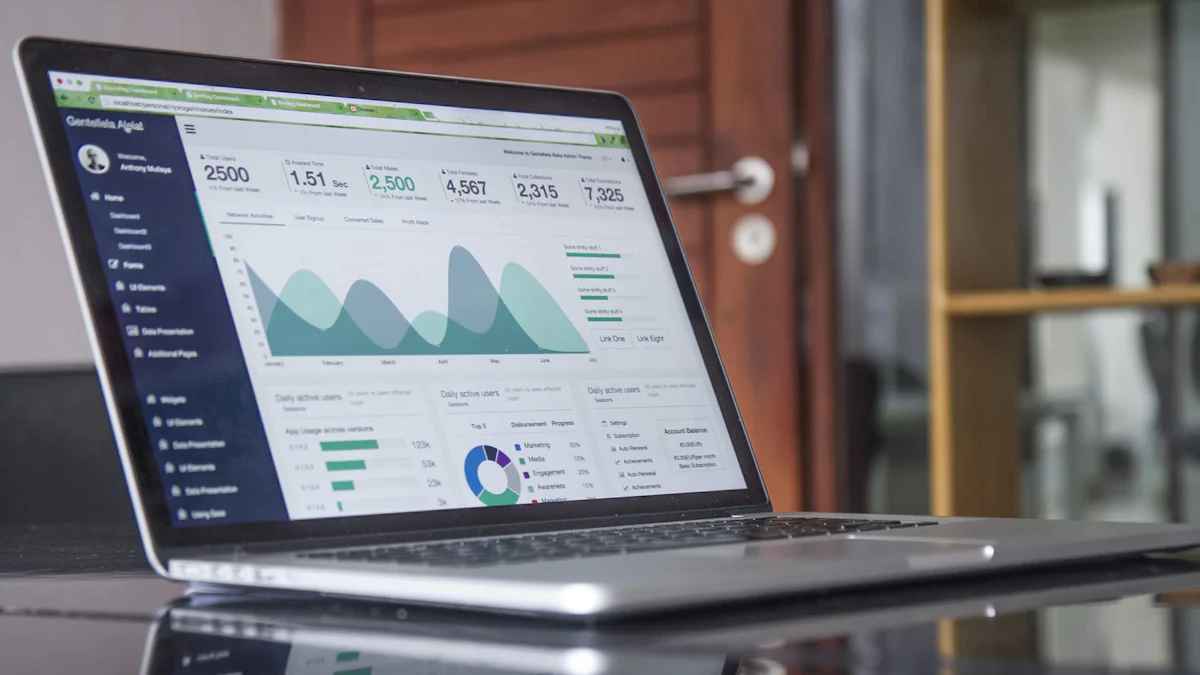
Establishing a Monitoring Framework
To implement data monitoring effectively, you need to establish a robust framework. This framework serves as the backbone of your monitoring efforts, ensuring consistency and reliability.
Defining Metrics and KPIs
Start by defining the metrics and Key Performance Indicators (KPIs) that align with your business objectives. Metrics provide measurable values that help you track performance. KPIs, on the other hand, are specific indicators that reflect the success of your goals. For instance, if your goal is to enhance customer satisfaction, you might monitor metrics like response time and customer feedback scores. By clearly defining these metrics and KPIs, you create a focused approach to data monitoring.
Setting Up Dashboards and Alerts
Once you have your metrics and KPIs, set up dashboards and alerts. Dashboards offer a visual representation of your data, making it easier to understand trends and patterns. Use tools like FineReport to create dynamic dashboards that update in real-time. Alerts notify you of any anomalies or critical events, allowing you to respond promptly. By setting up dashboards and alerts, you ensure that you stay informed and can make timely decisions.
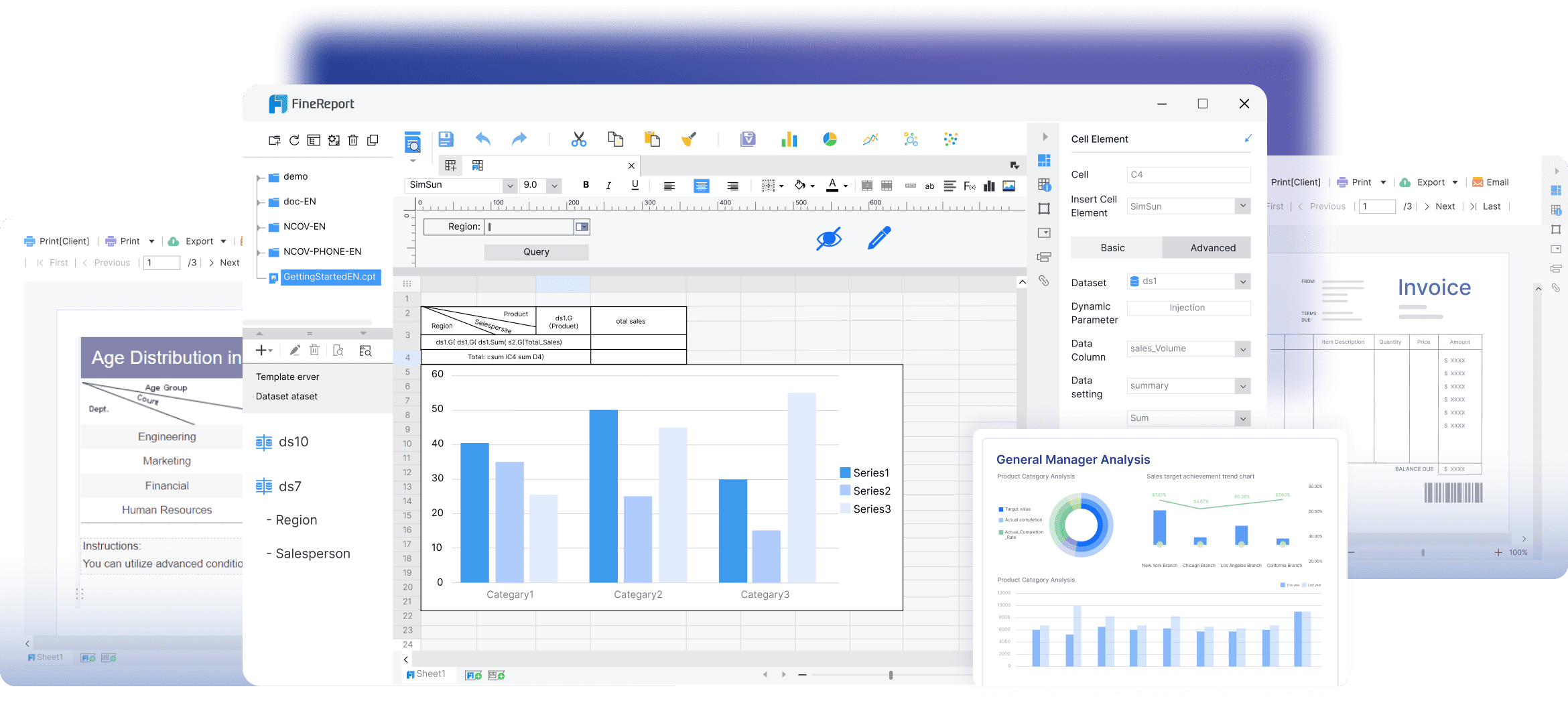
Data Collection Techniques
Data collection is a crucial step in the monitoring process. You need to gather accurate and relevant data to analyze and report effectively.
Automated Data Collection
Automated data collection enhances efficiency and reduces human error. Use tools like FineDataLink to automate the collection process. This tool synchronizes data in real time, ensuring that you have the most up-to-date information. Automation minimizes manual intervention, allowing you to focus on analysis and decision-making. By implementing automated data collection, you streamline your monitoring efforts and maintain data quality.
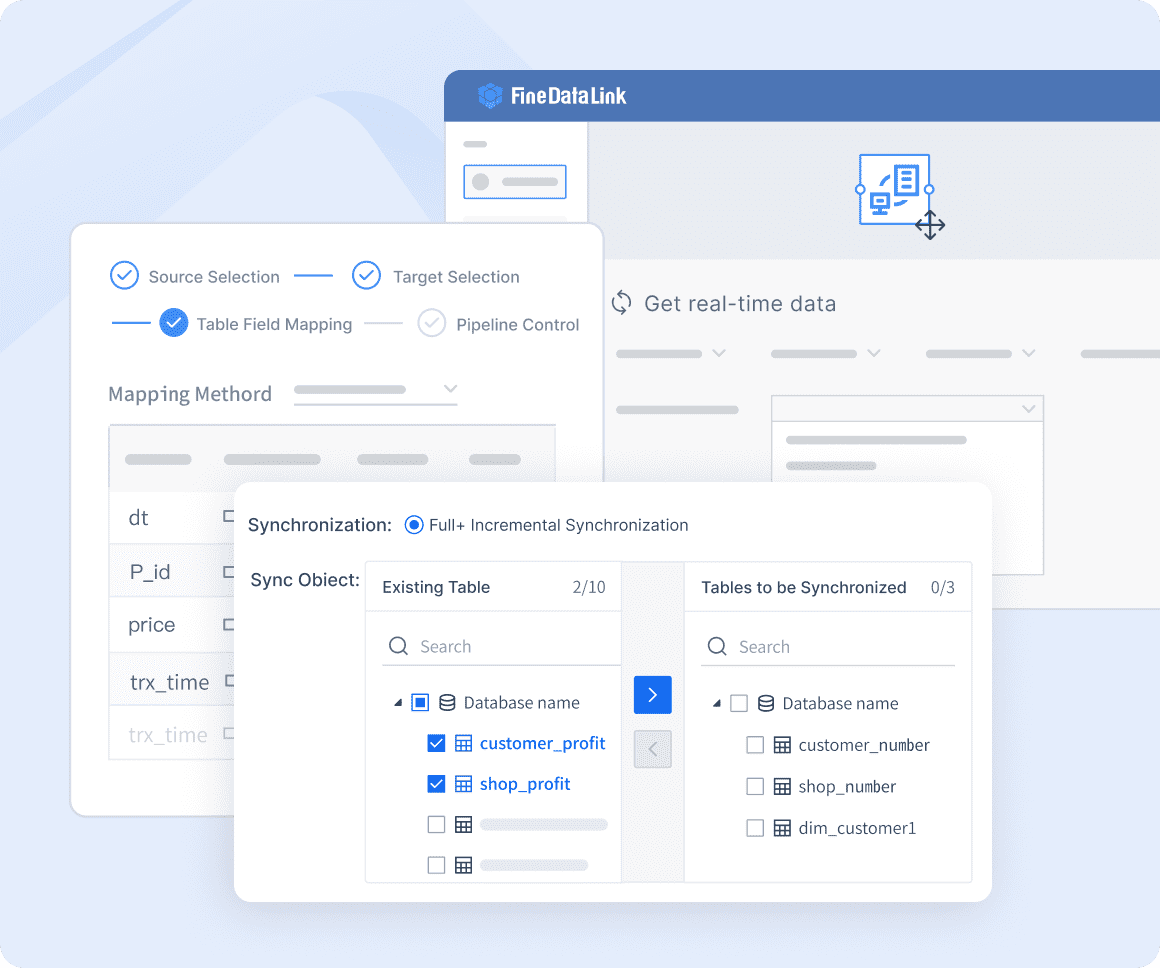
Manual Data Collection
In some cases, manual data collection may be necessary. This method involves human intervention to gather data from various sources. While it can be time-consuming, manual collection allows for flexibility and customization. You can tailor the data collection process to meet specific needs or address unique challenges. Ensure that you have a clear process in place to minimize errors and maintain consistency. By balancing automated and manual data collection, you create a comprehensive approach to data monitoring.
Analyzing Data Effectively in Data Monitoring
Data Analysis Methods
Descriptive Analysis
Descriptive analysis helps you understand your data by summarizing and interpreting historical information. This method provides a clear picture of past events, allowing you to identify patterns and trends. By using descriptive analysis, you can gain insights into what has happened in your business. This understanding forms the foundation for making informed decisions. You can use tools like FineBI to create visualizations that make these insights more accessible.
Predictive Analysis
Predictive analysis takes your data a step further by using historical data to forecast future outcomes. This method involves applying statistical techniques and machine learning algorithms to predict trends and behaviors. For example, you might use predictive analysis to anticipate customer demand or identify potential risks. By leveraging predictive analysis, you can make proactive decisions that drive business success. Unlike regression analysis, which focuses on modeling relationships between variables, predictive analysis aims to foresee future scenarios.
Interpreting Data Insights
Identifying Trends and Patterns
Identifying trends and patterns in your data is crucial for effective data monitoring. By recognizing these patterns, you can understand how different factors influence your business. For instance, you might notice a seasonal trend in sales or a recurring issue in customer feedback. Tools like FineReport can help you visualize these trends, making it easier to spot significant changes. By staying aware of these patterns, you can adapt your strategies to meet evolving demands.
Making Data-Driven Decisions
Data-driven decisions rely on the insights gained from your analysis. By interpreting data effectively, you can make informed choices that align with your business goals. For example, if your analysis reveals a decline in customer satisfaction, you might decide to improve your customer service processes. Making data-driven decisions ensures that your actions are based on evidence rather than assumptions. This approach enhances your ability to achieve desired outcomes and maintain a competitive edge.
Ensuring Data Quality in Data Monitoring
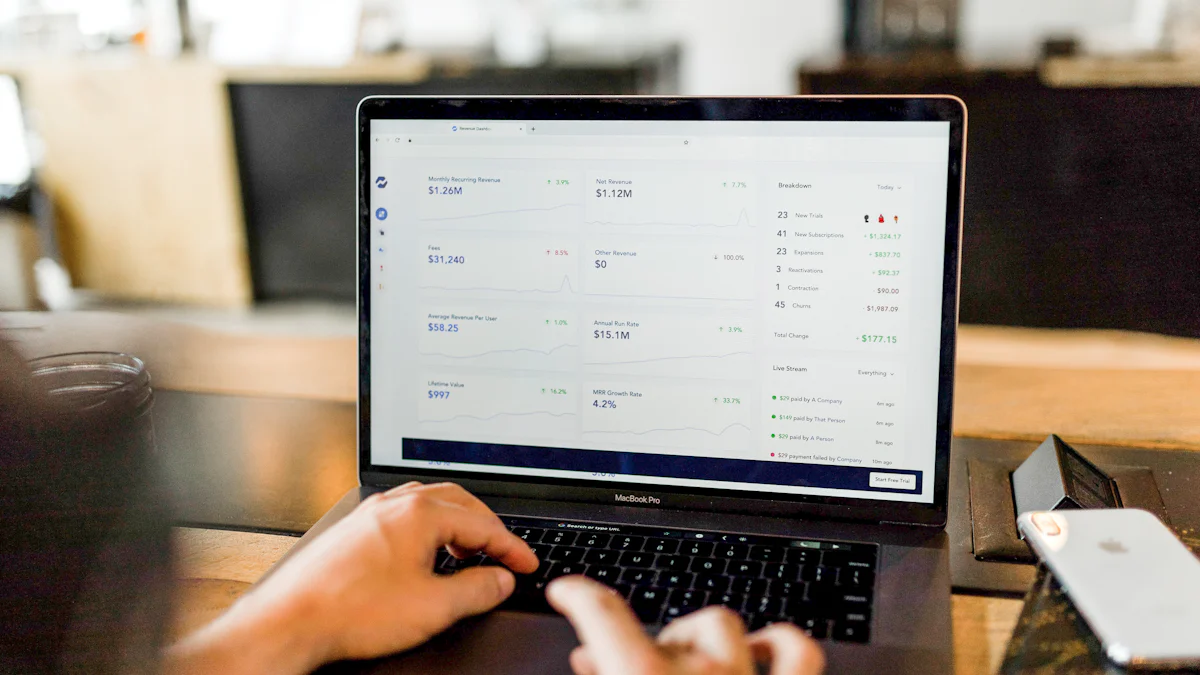
Data Validation Techniques
Ensuring data quality is crucial for effective data monitoring. You must employ robust validation techniques to maintain accuracy and reliability.
Data Cleansing
Data cleansing involves identifying and correcting errors or inconsistencies in your data. This process ensures that your data remains accurate and reliable. You can remove duplicate entries, correct inaccuracies, and fill in missing values. By cleansing your data, you enhance its quality and make it more useful for analysis. This step is essential for maintaining the integrity of your data monitoring efforts.
Data Verification
Data verification confirms the accuracy and consistency of your data. You compare your data against trusted sources or predefined rules to ensure its validity. Verification helps you identify discrepancies and rectify them promptly. By verifying your data, you maintain its reliability and trustworthiness. This practice is vital for making informed decisions based on accurate information.
Addressing Data Quality Issues
Data quality issues can significantly impact your business operations. You need to address these challenges to ensure effective data monitoring.
Common Data Quality Problems
Many businesses face common data quality problems. These include incomplete data, duplicate records, and inconsistent formats. Poor data quality can lead to inaccurate analysis and misguided decisions. According to a survey, 57% of data professionals identified data quality as a major challenge in the data preparation process. Additionally, poor data quality can impact 31% of revenue on average, highlighting its significance.
Solutions and Best Practices
To address data quality issues, you should implement best practices. Start by establishing clear data quality standards and guidelines. Regularly audit your data to identify and rectify issues. Use automated tools to streamline data cleansing and verification processes. Encourage collaboration among teams to ensure a unified approach to data quality. By adopting these practices, you can enhance data quality and improve your monitoring efforts.
Continuous Improvement in Data Monitoring
Regular Review and Updates
To maintain effective data monitoring, you must regularly review and update your systems. This practice ensures that your monitoring efforts remain relevant and efficient.
Monitoring System Performance
You should consistently evaluate the performance of your monitoring systems. This evaluation helps you identify any inefficiencies or areas for improvement. By assessing system performance, you can ensure that your data monitoring processes operate smoothly. Regular performance checks allow you to detect potential issues before they escalate, maintaining the integrity of your data.
Updating Monitoring Strategies
Updating your monitoring strategies is essential for adapting to changing business needs. As your organization evolves, your data monitoring requirements may shift. You need to revise your strategies to align with these changes. By updating your monitoring strategies, you ensure that your efforts continue to support your business goals. This proactive approach keeps your data monitoring relevant and effective.
Learning from Incidents
Incidents provide valuable learning opportunities for improving data monitoring practices. By analyzing incidents, you can identify weaknesses and implement preventive measures.
Incident Analysis
When an incident occurs, you should conduct a thorough analysis. This analysis helps you understand the root cause and impact of the incident. By examining incidents, you gain insights into potential vulnerabilities in your data monitoring processes. These insights enable you to address weaknesses and enhance your monitoring efforts.
Implementing Preventive Measures
After analyzing incidents, you must implement preventive measures. These measures help you avoid similar incidents in the future. By taking proactive steps, you strengthen your data monitoring processes. Implementing preventive measures ensures that your data remains secure and reliable. This commitment to continuous improvement enhances your ability to make informed decisions based on accurate data.
Overcoming Challenges in Data Monitoring
Common Challenges
Data Overload
In today's digital age, you face an overwhelming amount of data. This data overload can make it difficult to focus on what's truly important. You might find yourself drowning in information, struggling to extract meaningful insights. The key is to identify the data that aligns with your business goals. By doing so, you can prioritize the most relevant information and avoid getting lost in the noise.
Security and Privacy Concerns
Data security and privacy remain top concerns for businesses. You must protect sensitive information from unauthorized access and breaches. With increasing regulations, such as GDPR, ensuring compliance becomes even more critical. You need to implement robust security measures to safeguard your data. This includes encryption, access controls, and regular audits to maintain data integrity.
Strategies to Overcome Challenges
Prioritizing Data
To manage data overload, you should prioritize the data that matters most. Start by defining clear objectives and identifying key metrics. Focus on data that directly impacts your business outcomes. Use tools like FineDataLink to streamline data integration and ensure you have access to the most relevant information. By prioritizing data, you can make informed decisions without getting overwhelmed.
Ensuring Compliance
Compliance with data protection regulations is essential. You need to stay updated on the latest legal requirements and implement necessary measures. Regularly review your data monitoring processes to ensure they align with compliance standards. Use automated tools to track and report on data usage. By ensuring compliance, you protect your business from legal risks and build trust with your customers.
"Data monitoring is fundamentally about three principles: accuracy, timeliness, and comprehensiveness." By adhering to these principles, you can overcome challenges and enhance your data monitoring efforts. Regular validation and quality checks ensure data accuracy. Timely data helps you capture real-time insights. A comprehensive approach covers a wide range of data types and sources, providing a holistic view of your business.
Leveraging FineDataLink for Data Monitoring
In the realm of data monitoring, FineDataLink stands out as a powerful tool that can significantly enhance your data management processes. By leveraging its features, you can ensure that your data remains accurate, synchronized, and ready for analysis.
Features of FineDataLink
Real-Time Data Synchronization
FineDataLink excels in real-time data synchronization. This feature ensures that data from various sources is continuously updated and synchronized across your systems. You gain access to the most current information, which is crucial for making timely decisions. Real-time synchronization reduces the risk of data silos and enhances the accuracy of your datasets. This capability allows you to maintain a unified view of your data, facilitating comprehensive analysis.
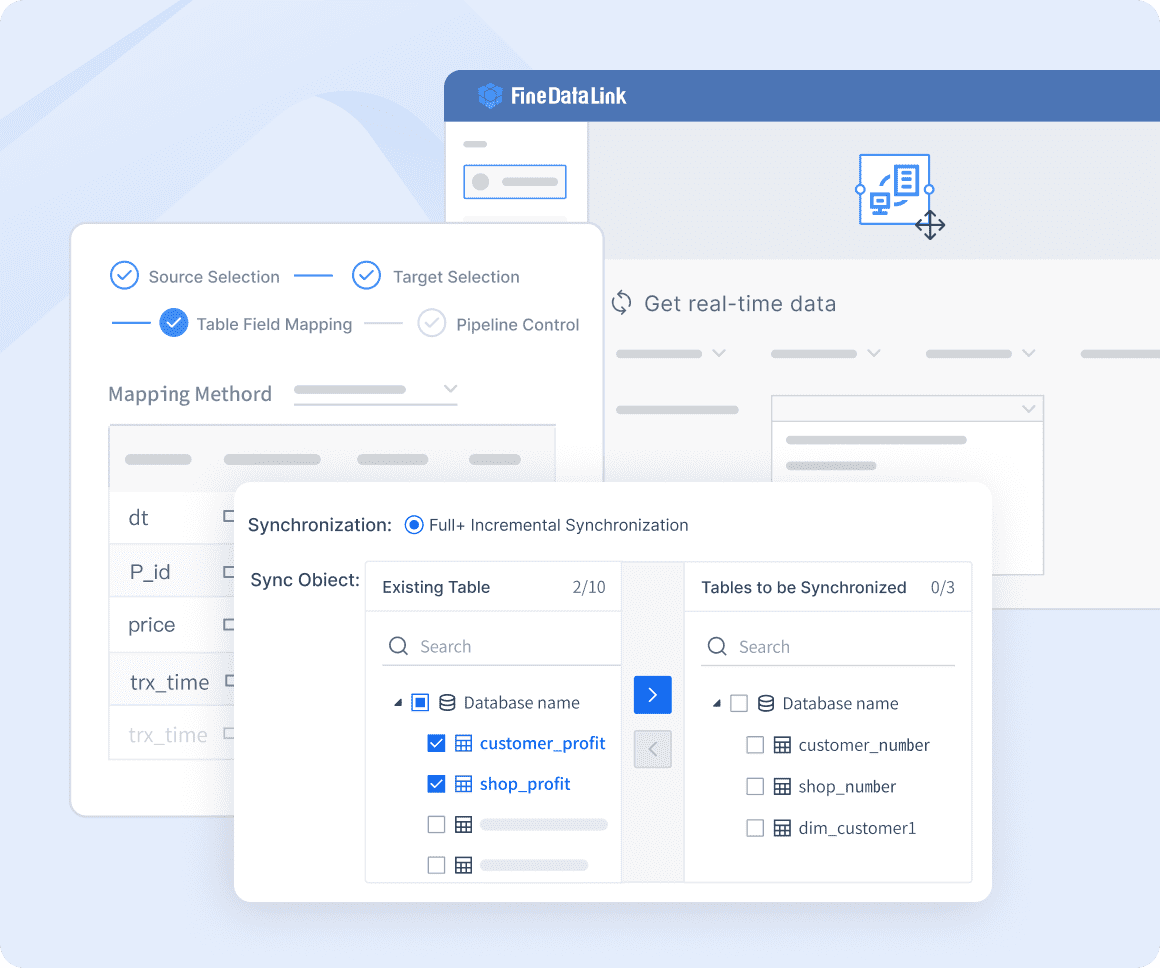
Advanced ETL & ELT Capabilities
The platform offers advanced ETL (Extract, Transform, Load) and ELT (Extract, Load, Transform) capabilities. These processes are essential for preparing data for analysis. With FineDataLink, you can efficiently extract data from multiple sources, transform it into a usable format, and load it into your desired destination. This streamlined process minimizes manual intervention and reduces errors. You can focus on analyzing data rather than spending time on data preparation.
Benefits of Using FineDataLink
Enhancing Data Quality
Using FineDataLink enhances the quality of your data. The platform's ability to connect and synchronize data from disparate systems ensures that all relevant information is aggregated into a unified dataset. This integration not only improves the comprehensiveness of your analytics but also ensures that the data is current and accurate. By maintaining high data quality, you can make informed decisions that drive business success.
Streamlining Data Integration
FineDataLink simplifies data integration, making it a valuable asset for any organization. The platform supports seamless integration with various data sources, allowing you to consolidate information effortlessly. This capability streamlines your data workflows and reduces the complexity of managing multiple data streams. By using FineDataLink, you can ensure that your data integration processes are efficient and effective, enabling you to focus on deriving insights from your data.
"FineDataLink has enabled the successful delivery of 1000 data projects," showcasing its reliability and effectiveness in data integration and monitoring.
By leveraging the features and benefits of FineDataLink, you can enhance your data monitoring efforts and ensure that your data remains a valuable asset for your organization.
In mastering data monitoring, you unlock the potential to make informed decisions and drive business success. By implementing best practices, you ensure data quality, security, and compliance. This discipline involves systematically collecting, analyzing, and managing data, which is crucial in today's data-driven world. Embrace these strategies to stay relevant and effective in a dynamic business environment. Remember, understanding and leveraging data monitoring empowers you to harness data's full potential, leading to better outcomes and a competitive edge.
FAQ
Data monitoring involves systematically collecting, analyzing, and managing data to ensure its accuracy, security, and compliance. This process helps you detect anomalies, track performance, and maintain data quality, which is essential for making informed business decisions.
Data monitoring plays a crucial role in maintaining data quality, which directly impacts decision-making. Accurate data leads to better business outcomes, giving you a competitive edge. By prioritizing data monitoring, you can quickly identify trends, address issues, and adapt to market changes.
To ensure data quality, employ robust validation techniques like data cleansing and verification. Regularly audit your data to identify and rectify issues. Use automated tools to streamline these processes and maintain high data quality, enabling you to make informed decisions.
Effective data monitoring involves several key components:
Data Collection: Gather data from various sources using automated tools to minimize errors.
Data Analysis: Examine collected data to extract meaningful insights using methods like descriptive and predictive analysis.
Data Reporting: Present analyzed data in a clear format using dashboards and visualizations.
FineDataLink enhances data monitoring by offering real-time data synchronization and advanced ETL & ELT capabilities. It ensures data accuracy and reduces manual intervention, allowing you to focus on analysis and decision-making. As one user noted, "FineDataLink has enabled the successful delivery of 1000 data projects," showcasing its reliability and effectiveness.
Organizations often face challenges like data overload and security concerns. To overcome these, prioritize relevant data and implement robust security measures. Regularly review your data monitoring processes to ensure compliance with regulations and maintain data integrity.
Continuous improvement involves regularly reviewing and updating your monitoring systems. Learn from incidents by analyzing them and implementing preventive measures. This proactive approach ensures your data monitoring efforts remain effective and aligned with your business goals.
Continue Reading About Data Monitoring
10 Game-Changing Project Management Reporting Types!
Unlock project success with 10 must-know reporting types! Track progress, manage risks, and stay on budget like a pro.
Lewis
Mar 03, 2025
2025's Best Data Validation Tools: Top 7 Picks
Explore the top 7 data validation tools of 2025, featuring key features, benefits, user experiences, and pricing to ensure accurate and reliable data.
Howard
Aug 09, 2024
Business Data Analyst vs Business Analyst Key Differences Explained
Compare business data analyst vs business analyst roles, focusing on key differences, responsibilities, skills, and career paths to guide your career choice.
Lewis
Mar 11, 2025
Data Pipelines vs ETL Pipelines Explained
Understand the key differences between data pipelines and ETL pipelines. Learn how 'data pipeline vs ETL' impacts data movement, transformation, and analysis.
Howard
Dec 13, 2024
Explore the Best Data Visualization Projects of 2025
Discover 2025's top data visualization projects that transform data into insights, enhancing decision-making across industries with innovative tools.
Lewis
Nov 25, 2024
How Data Management Consultants Boost Operational Efficiency
Boost operational efficiency with data management consultants. Enhance decision-making, streamline processes, and achieve cost savings with expert strategies.
Howard
Nov 29, 2024


